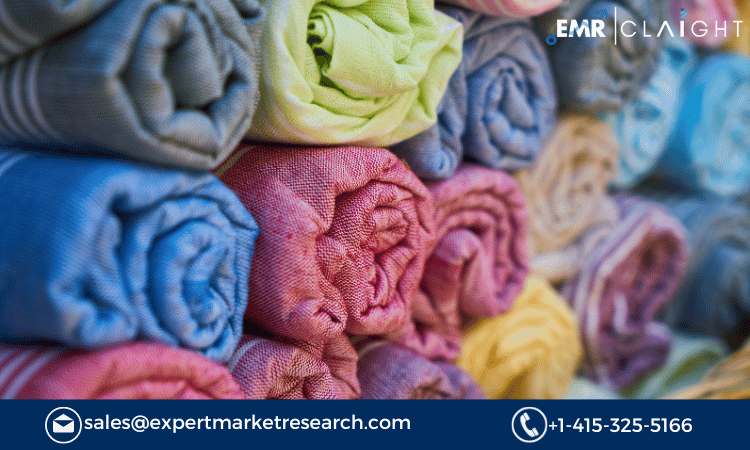Australia Textile Market Report 2024-2032: Trends, Growth, and Future Outlook
According to the report by Expert Market Research (EMR), the Australia textile market is projected to grow at a CAGR of 0.5% between 2024 and 2032. Aided by the increasing demand for sustainable and innovative fabrics, as well as the rise of domestic textile production capabilities, the market is expected to experience significant growth by 2032.
The Australian textile industry has undergone substantial transformation in recent years, driven by evolving consumer preferences, regulatory frameworks promoting sustainable practices, and advancements in textile technology. The demand for eco-friendly, durable, and functional textiles is on the rise, with industries such as fashion, interior design, and automotive being key consumers.
The booming interest in technical textiles, which serve specialized functions such as water resistance, fire retardation, and durability, has further propelled the growth of the textile market. Additionally, increased urbanization and shifts in consumer spending behavior towards premium and personalized clothing have supported the demand for high-quality fabrics.
Market Drivers
The Australia textile market is driven by several key factors. One of the most prominent drivers is the growing focus on sustainability. The textile industry has been under scrutiny for its environmental impact, prompting Australian companies to adopt greener practices. The increasing use of organic cotton, bamboo, and recycled polyester is meeting the needs of eco-conscious consumers and aiding in the market’s expansion.
Another critical factor is technological advancement in textile manufacturing. The incorporation of smart textiles and innovations in fabric treatment processes have added value to the sector. This trend is driven by consumer demand for functional fabrics used in activewear, healthcare, and military applications.
The local fashion industry in Australia also plays a significant role in the textile market. Australia’s fashion designers and brands are becoming more prominent on the global stage, increasing the demand for premium fabrics and encouraging the local production of high-quality textiles.
Get a Free Sample Report with Table of Contents: https://www.expertmarketresearch.com/reports/australia-textile-market/requestsample
Market Challenges
Despite these growth opportunities, the Australia textile market faces several challenges. One notable challenge is the rising cost of raw materials, including cotton and synthetic fibers, which impacts profit margins for manufacturers. Moreover, competition from low-cost textile manufacturers in countries such as China and India poses a significant threat to the Australian textile industry, especially in terms of pricing and mass production.
Environmental regulations also play a dual role, as while they encourage sustainable practices, they add compliance costs to the industry. Smaller manufacturers may find it difficult to keep up with stringent regulations, impacting their ability to compete on both a local and global scale.
Market Segmentation
The Australia textile market can be segmented based on product type, application, and end-use industry.
Market Breakup by Product Type
- Natural Fibers
- Cotton
- Wool
- Silk
- Others
- Synthetic Fibers
- Polyester
- Nylon
- Acrylic
- Others
- Technical Textiles
Market Breakup by Application
- Apparel
- Fashion Apparel
- Workwear
- Sportswear
- Others
- Home Textiles
- Bed Linens
- Towels
- Upholstery
- Others
- Industrial Textiles
- Medical Textiles
- Geotextiles
- Protective Clothing
- Others
Market Breakup by End-Use Industry
- Fashion and Apparel Industry
- Home Décor
- Healthcare and Medical
- Automotive
- Construction
- Others
Regional Analysis
The textile industry in Australia is concentrated in key regions, with Victoria and New South Wales being the most significant contributors to production. These regions benefit from well-established supply chains, infrastructure, and access to raw materials. Melbourne, known for its fashion-forward culture, is a hub for textile innovation and sustainable practices.
Other regions, such as Queensland and Western Australia, are witnessing increasing activity in textiles, particularly in the development of technical and industrial textiles, which cater to the mining, construction, and agriculture sectors.
Competitive Landscape
The Australia textile market is highly competitive, with a mix of domestic manufacturers and international players. Some of the key companies operating in the market include:
- Bruck Textiles
- One of the leading manufacturers of high-performance technical textiles, supplying various industries including defense and firefighting.
- Textile Traders
- A major supplier of both apparel and home textiles, offering a wide range of fabrics.
- Waverley Mills
- Known for its sustainable woolen products, Waverley Mills is Australia’s oldest textile mill, emphasizing environmentally conscious production.
- Charles Parsons & Co.
- A significant player in the supply of fashion, interiors, and industrial fabrics, known for its innovation and market reach.
- Australian Textile Mills
- A leading producer of fabrics for the home décor and industrial textile segments.
The market has also seen a rise in small-scale, eco-friendly manufacturers that focus on producing organic and recycled materials. These players cater to niche markets, targeting environmentally conscious consumers and businesses.
Innovations and Trends
In recent years, sustainability has become a central theme in the Australia textile market. Companies are increasingly focusing on reducing waste, lowering water consumption, and minimizing the use of harmful chemicals. The adoption of circular fashion models is also gaining traction, with brands creating fabrics that are biodegradable or recyclable at the end of their life cycle.
The demand for smart textiles, which incorporate advanced materials with functionalities such as moisture control, temperature regulation, and health monitoring, is another significant trend. These textiles are particularly sought after in sectors like healthcare and sportswear.
The growth of e-commerce and online retail has also had a profound impact on the textile market in Australia. Consumers now have access to a wider variety of fabrics and textiles, and brands can reach broader audiences through digital platforms.
Future Outlook
The Australia textile market is expected to continue its growth trajectory, with increasing consumer awareness of sustainability, advancements in textile technology, and a thriving fashion industry. The demand for functional textiles, including technical textiles and smart fabrics, will play a key role in driving market expansion.
While challenges such as rising raw material costs and competition from international markets remain, the focus on innovation, sustainability, and the development of high-quality, locally sourced fabrics is likely to enhance the market’s resilience.
By 2032, the Australia textile market is poised to witness considerable advancements in both production capabilities and market demand. Collaborative efforts between the government, manufacturers, and fashion industry leaders will be crucial in positioning Australia as a leader in sustainable and innovative textile solutions.






